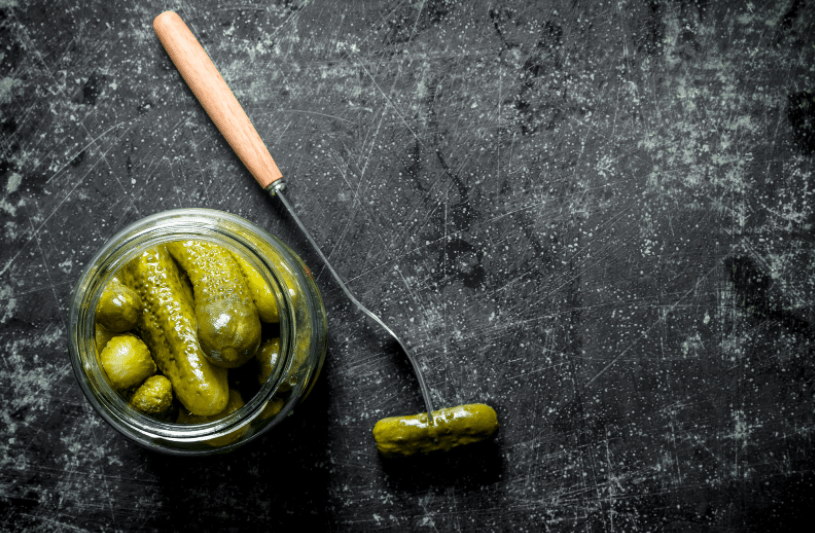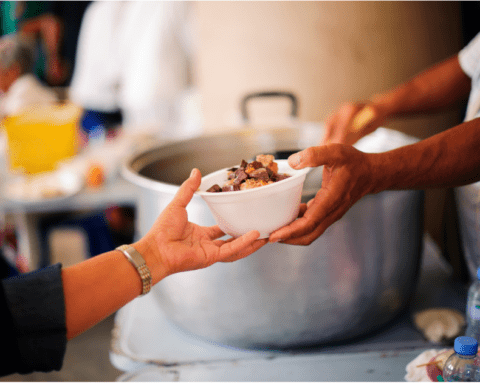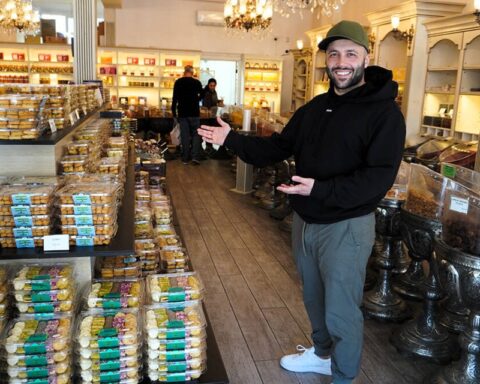National Pickles Day, Nov. 14, was celebrated with much ado in North America.
Canadians quickly moved up and down food and condiment aisles with their trolleys picking up jars of pickles. Their penchant for the piquant palate tickler has got them pecking away on pickled peppers.
“Extra pickles, please” was the most popular special request in Ottawa and in five other cities in Canada, according to an Uber Eats survey. The food delivery App’s third annual Cravings Report (2021) revealed that “Canadians wanted spicy, extra pickles, on the side, on their orders,” according to Lola Kassim, GM of Uber Eats Canada.
Those reaching out for the pickle jars wanted more salt and vinegar concoctions to make their food more palatable. The extra cheese requests that occupied pride of place were moved aside.
At Ottawa’s World Burger restaurant, extra pickles were in demand.
“Probably about 35 per cent of my orders want extra pickles,” noted manager Brian Perry.
“You’ll see, ‘extra pickles,’ ‘extra pickles,’ ‘extra pickles’…and we get the point. So, we put a lot of pickles,” added co-owner Lenny Andonakakis.
And it’s never a “dill” moment over at the Cadmans Montreal Bagels too.
“It’s like every second order has extra pickles in it,” said an employee at the restaurant.
Those eager for the extra kick are zealots hailing from Calgary, Edmonton, Halifax, Hamilton, London, Ottawa, Toronto and Winnipeg. Vancouver is picky about having no green onions while Victoria wants its pickles gluten-free, confirmed Uber Eats.
An immigrant pickle
Canada’s long liaison with pickles entered a new phase with the daunting presence of garlic introduced by immigrants. This continental touch came with the post-war arrivals to Canada. They brought with them an appetite for increased eating of Kosher and Polish dills and hot and mild banana pepper, a medium-sized member of the chili pepper family. The details are analyzed by John Clare in a Maclean’s article titled, “Why Canadians can’t leave pickles alone.”
If Canada has made do with cucumbers, olives and gherkins, the introduction of exotic out-of-this-world fiery spiciness can be attributed to the tastes and culinary expertise of immigrants complementing the soft mild taste of bread and potatoes. The fiery sharpness got the Canadians going for unfamiliar tastes. Canadians established their own favorites showing the inclination to place cucumber as its prime pickle material.
The most popular commercial pickle is known to the trade as Sweet Mixed Pickles. In the Maritimes, mustard pickles are a close second and in other parts of the country pasteurized dills are so mild that babies can safely eat them. In the cities, where there is a larger foreign born population, kosher dills, laden with garlic, and Polish dills, fiery with hot red pepper pods, are flavourites.
There’s much to be said of the immigrants’ pickle finding favor on Canadians’ tongues. The top five buyers of imported pickles in the world are the United States, Germany, Netherlands, Canada and the United Kingdom. Collectively, these five major importers accounted for 47.7 per cent of international purchases of pickles in 2020.
Pickle dollars
Among the 15 countries that imported the highest dollar value worth of pickles during 2020 is Canada, with US $47.1 million, taking a 6.2 per cent of the total share. United States led with US$96 million (13.7 per cent of total imported pickles), followed by Germany at $82.6 million (11.8 per cent) and Netherlands at $65.5 million (9.35 per cent).
India was among the 15 countries that exported the highest dollar value worth of pickles during 2020, with US$137.1 million (19.5 per cent of total exported pickles). Germany exported $135.4 million (19.3 per cent), Turkey $128.4 million (18.3 per cent), Netherlands $77.7 million (11.1 per cent), United States $44.9 million (6.4 per cent), and Poland $31.1 million (4.4 per cent).
Of course, no pickle picture is complete without the mention of German-born George Bick and his son Walter Bick, a quintessential Canadian immigrant success story.
He was a Canadian pickle producer originally based out of Scarborough, Ontario. Bick’s emerged in 1951 in the Toronto area when local farmers began to pickle the cucumbers produced on their farm.
Beginning as a small operation of 60,000 jars, the Bicks produced 12 million jars in 1960. The business was sold in 1966 and is now sold in Canada by U.S.-based J.M. Smucker Co., which became part of International Multifoods.
Marshall Schuyler once grew 600 tones of cucumbers for Bick’s annually, but has gradually been cutting back on the produce. He says “the future success of Canadian cucumbers — and many of our processed vegetables — depends on the consumers’ willingness to pay for food safety,” referring to the rise of cheaper foreign imports that pickles like Bick’s are turning to.
Pickled history
Pickles’ history dates as far back as 2030 BC, when cucumbers were pickled in the Tigris Valley. The sharp flavor of pickles proved a welcome addition to the bland bread-and-potato diet of cold weather countries like Canada.
Among the ancient connoisseurs of food is Queen Cleopatra of Egypt who had her preference for pickles. Stories abound about how she credited the pickles in her diet as contributing to her health and legendary beauty.
Cleopatra’s lover Julius Caesar and other Roman emperors served pickles to their troops in the firm belief that they would make them strong. Christopher Columbus reportedly rationed pickles to his sailors, even going so far as to grow cucumbers in Haiti to restock for the rest of the discovery trip. Napoleon Bonaparte had offered to pay 12,000 francs (the equivalent of today’s $250,000) to the person who could come up with the best way to pickle and preserve food for his troops.
Canada has also linked names of places named with pickles! Pickle Lake is a township in the Canadian province of Ontario that was incorporated in 1980. It got its name from the shape of the lake which resembled a cucumber, or ‘Pickle’.
Gita Abraham is a journalist of 45-year standing and has worked in national dallies and magazines in New Delhi including Hindustan Times and India Today. For 15 years she was the Feature Editor of The City TAB in Bangalore. She was also a Professor of Journalism, at the Asian College of Journalism in Chennai. Treading the thin line between fact and fiction, Gita has launched her debut novel “Daughter of the Blue Hills” early this year. She and her husband are snowbirds shuffling between Chennai and Ottawa. She has two daughters and two frisky grandsons who inhabit her world.






Beautiful and well done article! Hats off to the author and keep writing such enjoyable reading material. Good Luck!